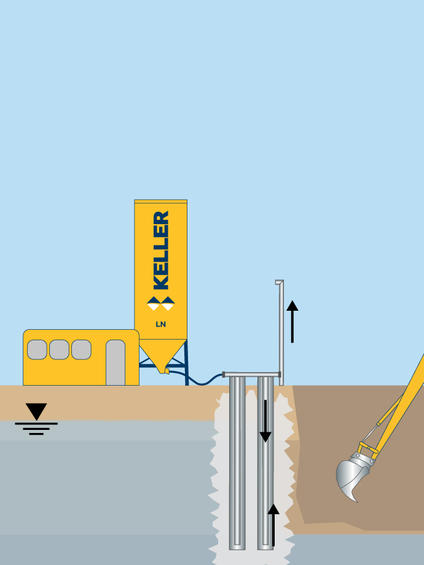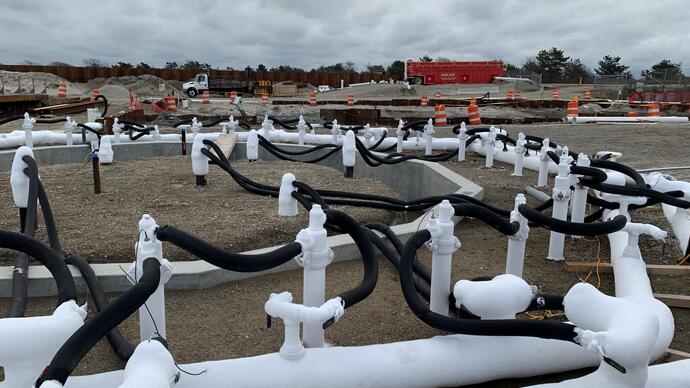Your complete guide to Ground Freezing
Our team has over 250 years of combined experience.
Artificial ground freezing converts in situ pore water to ice through the circulation of a chilled liquid via a system of small-diameter pipes placed in drilled holes.

Artificial ground freezing for groundwater control and excavation support was developed over a century ago. It is cost-effective in a relatively well-defined niche where both support of excavation and groundwater cut-off is required, and it is performed at significant depth or in difficult, disturbed, or sensitive ground.
The ground freezing process converts in situ pore water to ice through the circulation of a chilled liquid via a system of small-diameter pipes placed in drilled holes. The ice fuses the soil or rock particles, creating a frozen mass of improved compressive strength and impermeability. Brine is the typical cooling agent. However, fast-acting liquid nitrogen can be used for projects where the freeze only needs to be quickly established and maintained for a short period or in emergencies.

Joe Sopko received his BSc, MSc, and PhD in Civil Engineering from Michigan State University. He has more than 40 years of experience in all aspects of design and laboratory testing programs related to underground construction projects. He develops business opportunities related to geotechnical construction, specifically ground freezing and groundwater control, and routinely provides on-site project management and quality control programs. He has designed and managed ground freezing projects worldwide, including forming laboratory-frozen soil testing programs, numerical modeling, and on site quality control and assurance. He has completed over 100 projects, including deep shafts, tunnel adits, cross passages, and emergency TBM recoveries.
Dr. Sopko specializes in ground freezing for civil and mining projects worldwide. He is also an adjunct professor at Michigan State University. He served with the U.S. Air Force as an engineering officer in Afghanistan and Operation Deep Freeze in Antarctica.

Our team has over 250 years of combined experience.